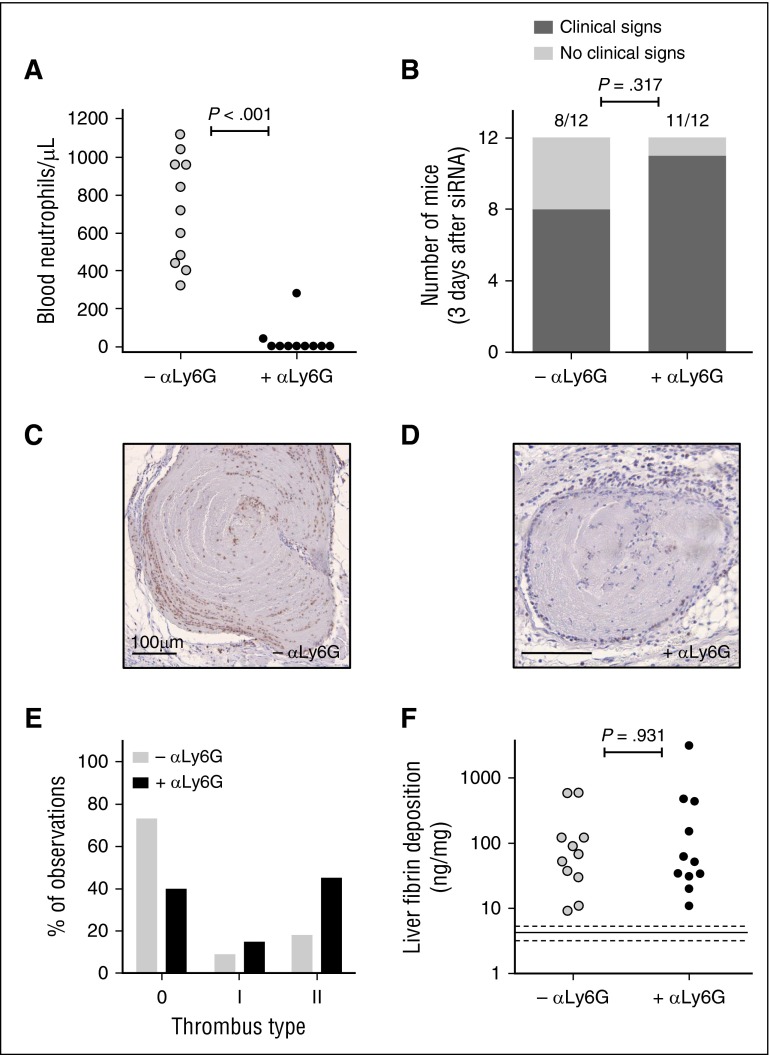Figure 2.
Depletion of neutrophils does not influence progression of thrombotic coagulopathy after siRNA-mediated hepatic knockdown of Serpinc1 and Proc. (A) Blood neutrophil numbers in mice 3 days after injection with a rat monoclonal antibody targeting mouse Ly6G (solid circles) or a rat IgG control (open circles) (Mann-Whitney rank sum test P < .001). (B) Scoring of the clinical phenotype in mice treated with siRNAs targeting Serpinc1 and Proc. Animals showing characteristic clinical signs (hatched bars) and animals unaffected (open bars) 3 days after siRNA treatment (end of experiment). One of the mice in each group (–αLy6G and +αLy6G) died as a result of the thrombotic coagulopathy (Fisher’s exact test P = .317). (C-D) Ly6G staining of thrombi found in sections of the head in (C) the –αLy6G and (D) the +αLy6G group. Hematoxylin was used for counterstaining; Scale bars represent 100 μm. (E) Scoring for the presence of thrombi: 0, no thrombi found; I and II, thrombi categories based on structure and layering. Open bars, –αLy6G (n = 22); solid bars, +αLy6G (n = 20). (F) Levels of fibrin deposition in the liver of the neutrophil-depleted group (+αLy6G) and the control group (–αLy6G) (Mann-Whitney rank sum test P = .931). Solid and dashed lines indicate fibrin levels found only in siNEG-injected C57BL/6J female mice (median, 4.5 ng/mg; range, 3.1-5.7 mg/mg).

